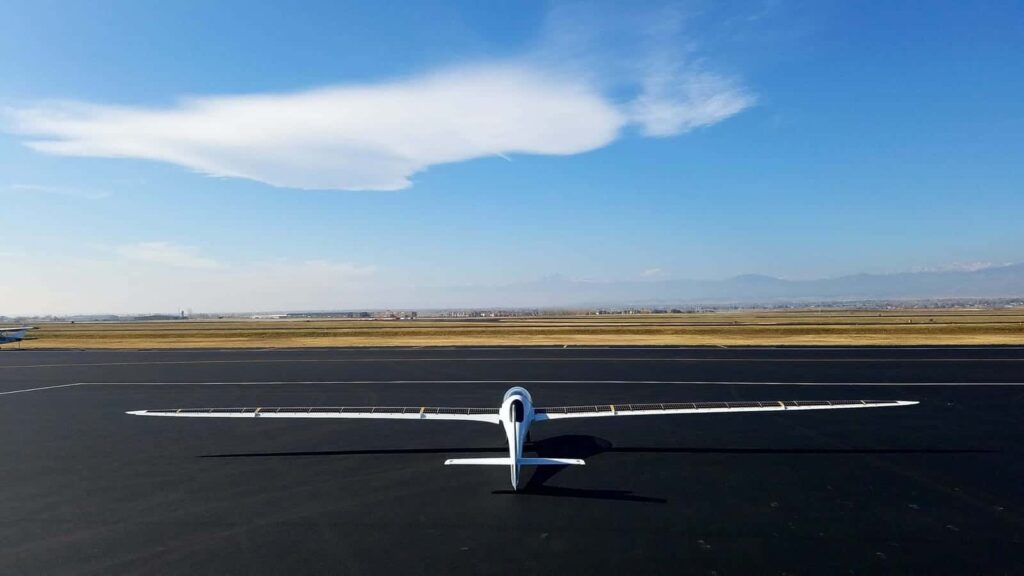SolAero Technologies has announced the successful completion of ground testing of the integrated solar wings on Bye Aerospace‘s medium-altitude, long-endurance solar-electric unmanned aerial vehicle (UAV) StratoAirNet. SolAero successfully integrated lightweight, flexible solar modules incorporating their state-of-the-art, high efficiency solar cell technology onto the wing structure, manufactured by Bye, while minimizing add-on mass and preserving the critical laminar flow surface of the wing.
StratoAirNet is a lightweight, carbon composite construction, aerodynamically efficient aircraft. The solar-electric UAV has a payload capacity of up to 70 lbs., enabling substantial capability with multiple sensors at altitudes of up to 35,000 feet. The initial StratoAirNet 15 prototype (with a 15-meter wing) can be optionally-piloted to enable rapid qualification of customer payloads without FAA airspace restrictions that can slow UAV payload development and deployment. With a test pilot in the prototype aircraft, solar, battery and propulsion system maturity, preliminary flight performance evaluation and autoflight control optimization are accomplished at a faster pace, with greatly reduced risk.
Find suppliers of Solar Power Solutions for UAVs >
George Bye, CEO of Bye Aerospace, expressed his gratitude and thanks to SolAero for developing the versatile StratoAirNet UAV, ultimately targeted to achieve “atmospheric satellite” capability. “SolAero is a business and engineering partner in every sense of the word,” he said. “With the completion of ground tests for the solar cells on the wings, we can advance to the next stage of assembly and in-flight testing.”
Brad Clevenger, President and CEO of SolAero Technologies, added, “George and team have been great partners in bringing to market a unique set of all-electric UAS capabilities and we’re excited to see the products continue to move successfully through the challenging stages of integration and testing.”



















